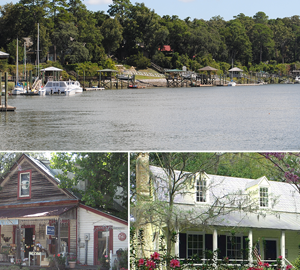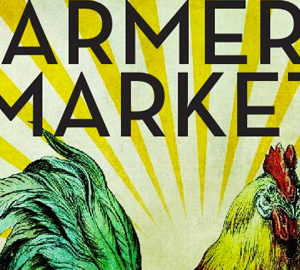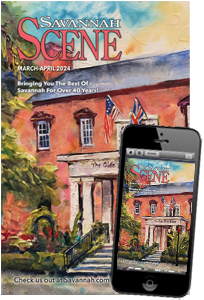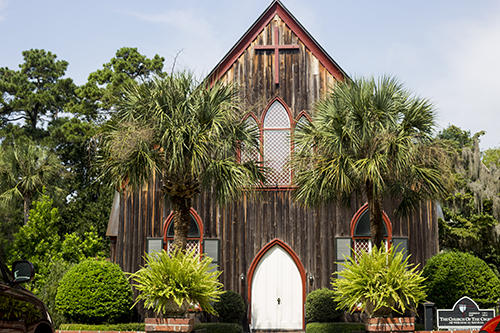
Hilton Head experienced major growth in the 1970s as subdivisions, golf courses and shopping centers were established.
Clever marketing tactics attracted visitors from all over the country to our previously sleepy shores. But across the bridge in Bluffton, it was a different story. Residents intent on keeping their way of life declared, “Bluffton is a State of Mind,” and resisted the influx of new development. The result of their efforts was that the Historical District remained intact. In 1995 the Bluffton Historic District was added to the National Register of Historic Places under Criteria A and C. So what is this State of Mind? To find that out you have to visit for yourself! The well-known sites are fascinating, but equally important is getting off of the beaten path and exploring these less travelled sites.
Discover the May River and arrive in Bluffton by water, just as people have for thousands of years.
You will land at the Calhoun Street dock and the majestic Church of the Cross will greet you. This area has been the gateway to Bluffton since 1850, when the first steamboat landing was built. At this time the town was growing fast and steamboats were transporting crops and goods to Savannah, where they were distributed throughout the region. This is also where, in 1863, Union troops stationed on Hilton Head invaded Bluffton and burned the majority of the town. Only 15 houses and two churches were saved.
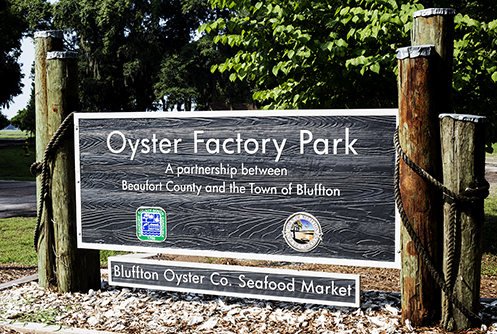
Walk down Calhoun and hang a left on Bridge Street, go a couple of blocks and you will be in the Old Oyster Factory Park.
The Oyster Factory has a rich history you should take the time to learn about, but so too does the unassuming little shack in the corner of the property. This is the Garvin House, built in 1870. After the Battle of Port Royal in 1861 and the Burning of Bluffton in 1863, slaves in this area were expressly freed. Slaves from nearby plantations ran away to join burgeoning free black communities. Cyrus Garvin was one such freed slave, formerly of the Baynard Plantation on Hilton Head He built his modest home from remains of buildings burned in the invasion of Bluffton. This home is the first, and only remaining, freed slave dwelling on the May River.
Go back to Calhoun Street and you will pass the beautiful Seven Oaks House, eclectic shops and artists’ studios.
At the corner of Calhoun and Church streets sits the huge Patz Brothers house. The Victorian style house was actually two identical apartments for each of the Patz brothers’ families. The brothers had moved from Baltimore in 1892 to start their shop, The Planters Mercantile. The house was built the following year. The Patz brothers were Jewish transplants. Like many other Jewish families, they moved from Northern urban areas into the post Civil War South. The store remained in the family until 1972. Morris Robinowich decided to close the shop and opened Morris Garage. Morris Garage still operates, and is around the corner on Highway 46.
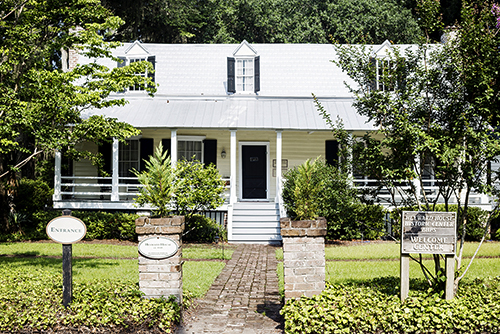
Cross the street and walk back down Calhoun until you reach the corner of Allen Street.
There, across from Seven Oaks stands the Graves House, built in 1908. Bluffton is a living city, constantly changing and adapting to new ideas about preservation, and nowhere is this more evident than the Graves House. The entire house has been lifted off of its foundation and moved about 14 feet on to a newer, sturdier foundation. This restoration came after an intense conflict between preservationists, The Historical Preservation Society, developers, former owners and the Bluffton United Methodist Church. It came very close to being completely demolished.
There’s time for one more stop before heading back to the boat.
Back up a few feet and head the other direction of Bridge Street. The next intersection, where Bridge and Boundary meet, was an important center of town for Old Bluffton. On one corner sits the Heyward House, one of the homes saved from the burning of Bluffton. It now houses the Bluffton Visitors Center and Historical Preservation Society. Catty-corner across the street is a low-slung brick building with a big wooden door and two big windows. Known as “The Rate,” this building housed a convenience-style store starting in 1940. This little structure was originally operated by the owners of the house that stood there. Later, the Post Office was run next door in a small brick building. Little evidence of this history remains at the site, though it is protected and mentioned in the National Register. But if you look closely on the side of the building you can make out painted advertisements from a bygone era.

Time to head back to the boat and get going – or is it?
Bluffton is truly a one of a kind place. It offers endless experiences exploring history, shopping, dining and engaging in outdoor activities. It is both a great place to live and an endlessly satisfying place to live. Outside Hilton Head offers a daily excursion to the Historic District. It combines a boat ride with a tour of the historical sites and time to explore on your own. However you choose to go, Historic Downtown Bluffton is a place you must see!
By Jessie Renew
